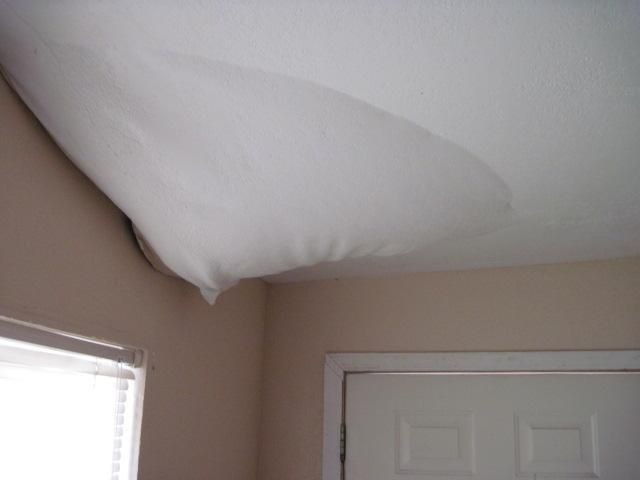Discovering a “Water Bulge In Ceiling” can be a homeowner’s worst nightmare, signaling potential issues that require immediate attention. In this comprehensive guide, we will delve into the causes, consequences, and effective solutions for addressing this unsettling phenomenon. Gain insights on how to safeguard your home from the perils associated with water bulges in ceilings and why timely intervention is crucial for maintaining a safe and sound living space.

Water Bulge In Ceiling: Understanding the Signs and Causes
A water bulge in the ceiling is not just an unsightly blemish; it is a red flag indicating an underlying problem that demands prompt investigation. Before we explore the solutions, let’s delve into the common signs and causes associated with a water bulge in the ceiling.
Recognizing the Signs: Water Bulge In Ceiling
- Visible Stains and Discoloration: One of the initial indicators of a water bulge is the presence of visible stains or discoloration on the ceiling. These marks often spread outward from the source of the water, providing a visual cue of the issue.
- Sagging or Bulging: As water infiltrates the ceiling material, it weakens the structure, leading to sagging or bulging in the affected area. This can create an uneven surface that is easily noticeable.
- Dripping Sounds: In some cases, water bulges may be accompanied by the sound of dripping water. This audible clue can help pinpoint the location of the leak and facilitate timely repairs.
Common Causes of Water Bulges in Ceilings
- Roof Leaks: Damaged or aging roofs are a common culprit behind water bulges in ceilings. Leaks can occur due to missing shingles, cracked flashing, or compromised roof seals.
- Plumbing Issues: Faulty plumbing, including burst pipes, leaking joints, or damaged water supply lines, can lead to water seepage into ceilings. Identifying and addressing plumbing issues promptly is crucial.
- Condensation: In humid climates, condensation can accumulate within ceiling spaces, leading to water bulges over time. Inadequate ventilation exacerbates this issue.
- Leaking Appliances: Malfunctioning appliances, such as water heaters, air conditioners, or washing machines, can be sources of water leaks that affect ceilings.
Addressing the Issue: Effective Solutions for Water Bulges in Ceilings
Now that we’ve identified the signs and causes, let’s explore practical solutions for addressing water bulges in ceilings. Timely intervention is essential to prevent further damage to your home.
- Locate and Repair the Source: Begin by identifying the source of the water intrusion. Inspect the roof, plumbing, and appliances for any visible signs of leaks. Once identified, initiate repairs promptly to stop the influx of water.
- Ceiling Repair and Restoration: Address the cosmetic damage caused by the water bulge by repairing and restoring the affected ceiling. This may involve removing damaged portions, applying sealants, and repainting to match the existing decor.
- Improve Ventilation: In cases where condensation is a recurring issue, improving ventilation within the home can mitigate the formation of water bulges. Proper airflow helps reduce humidity levels and prevents moisture buildup.
- Regular Maintenance: Implementing a routine maintenance schedule for your roof, plumbing, and appliances can preemptively identify and address potential issues before they escalate. Regular inspections can save you from costly repairs in the long run.
Preventing Future Water Bulges: Proactive Measures for Homeowners
- Routine Inspections: Conduct regular inspections of your home’s exterior, roof, and plumbing. Look for signs of wear, damage, or potential weak points that may lead to water intrusion.
- Prompt Repairs: Address any identified issues promptly. Whether it’s a small roof repair, fixing a leaky pipe, or replacing a malfunctioning appliance, swift action can prevent water bulges from developing.
- Invest in Quality Materials: When undertaking home improvement projects or repairs, invest in high-quality materials that enhance the durability and longevity of your home’s structure.
Read too: Understanding and Addressing a Crack in the Basement Ceiling: Unveiling the Dilemma
Conclusion: Safeguarding Your Home from Water Bulges
In conclusion, a water bulge in the ceiling is more than a cosmetic concern—it’s a symptom of potential structural damage that requires immediate attention. By understanding the signs, causes, and effective solutions, homeowners can take proactive measures to safeguard their homes from the detrimental effects of water intrusion.
Remember, early detection and intervention are the keys to preserving the integrity of your home and ensuring a safe and comfortable living environment.